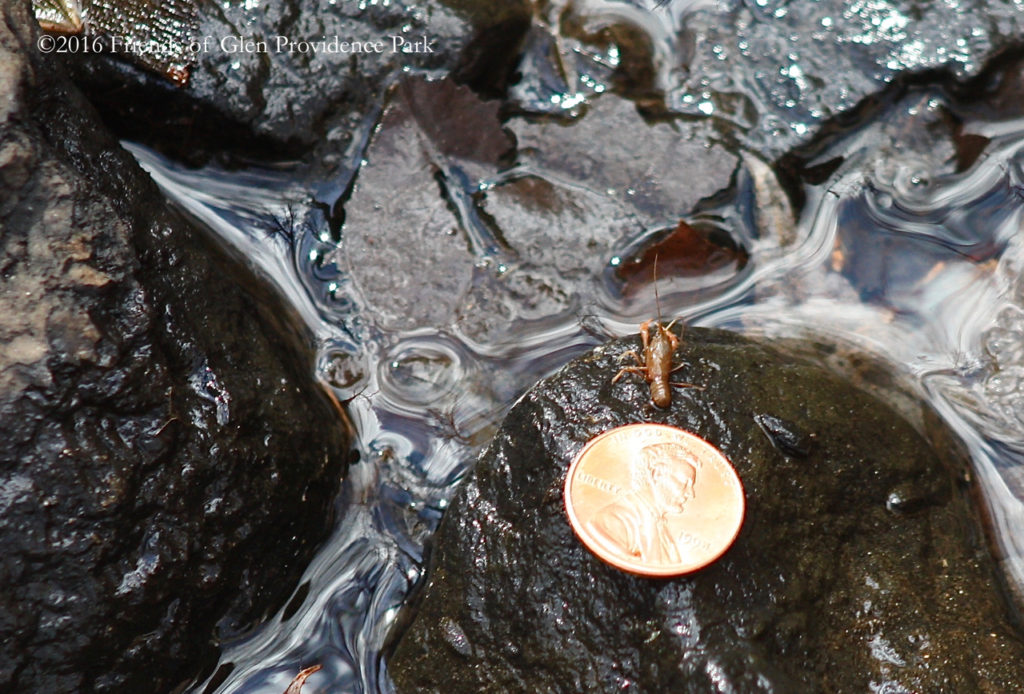Unintended effects of moving rocks in the stream

You have likely noticed the seemingly whimsical stacks of rocks along the stream in Glen Providence Park. People have also been moving rocks in the stream to dam and redirect sections, and presumably to make it easier to cross on foot. We believe these activities are well-intentioned, but moving rocks in and around the stream has unintended negative consequences.
First, it is harmful to wildlife
To quote Ben Lorson, of the PA Fish and Boat Commission’s Habitat Division, “A stream’s bottom — the substrate — has its own micro-habitats. The substrate provides the base of the aquatic food chain — from algae to macro-invertebrates all the way up to game fish. The surfaces of the rocks and the cracks and crevices between them are very important as habitat…”
And from ausableriver.org: “Salamanders and crayfish also make their homes under rocks, and rock moving can destroy their homes, and even lead to direct mortality of these creatures. Every single rock is potentially a home to the larval stages of aquatic insects, including dragonflies, damselflies, mayflies, stoneflies, and caddisflies, and many others. They cling to rocks and capture drifting food particles. By moving and stacking rocks, the insects that are attached to or living on the rocks can be desiccated and burned by the sun.”
It is also causing erosion
Much of the rock-moving that has occurred has directed water outwards towards the streambanks, where it is worsening the already severe erosion. Large trees have been undercut by the stream and fallen. Over the years, our Friday morning Conservation Crew has worked to remove log jams in the stream — this is important to direct water away from the streambanks. Constructing dams, redirections, and crossings in the stream has the opposite, negative effect — it directs water to the sides, towards the already-severely-eroded streambanks.
The County is looking at long-term solutions for the pond and stream to address the ongoing erosion and other issues, but it will take several years before large-scale solutions can be implemented. Until then, it is especially important that the water flow towards the center of the stream and away from the streambanks to minimize the already severe erosion.
We discourage any moving of rocks in or around the stream, without first consulting with Delaware County Parks & Recreation and/or the Delaware County Conservation District.








Recent Comments